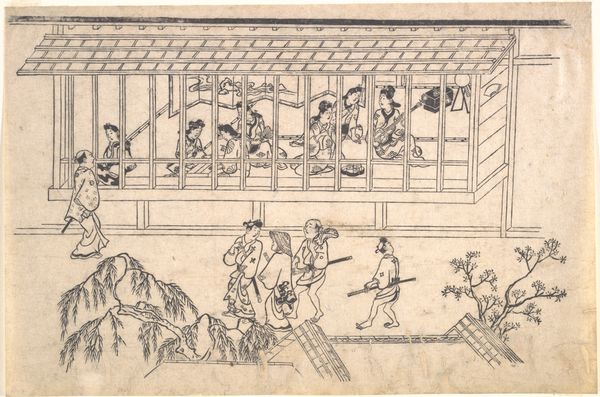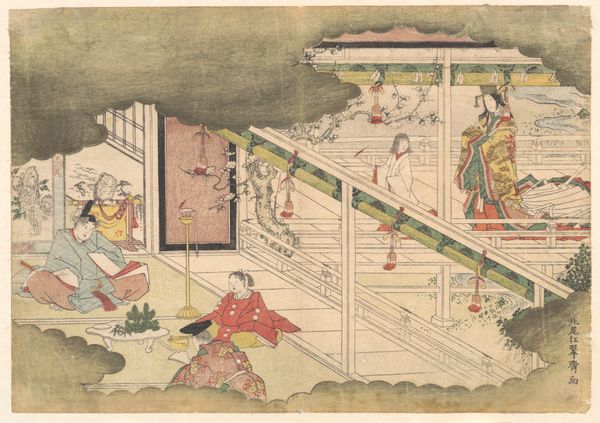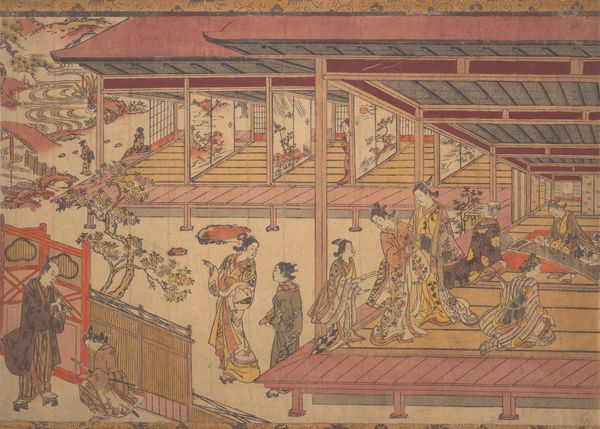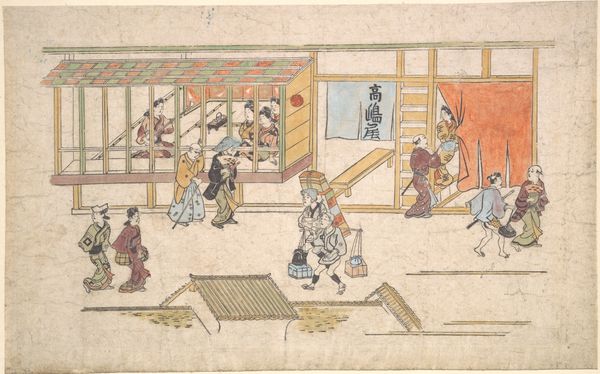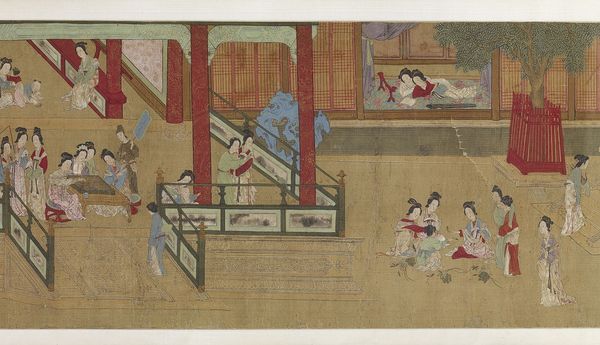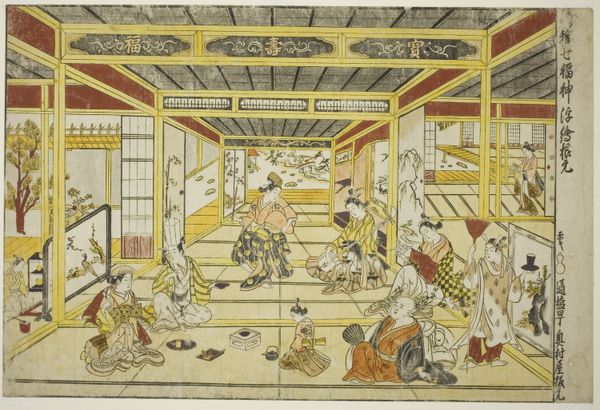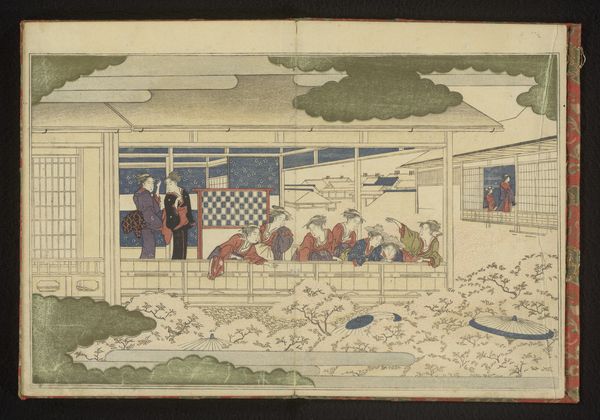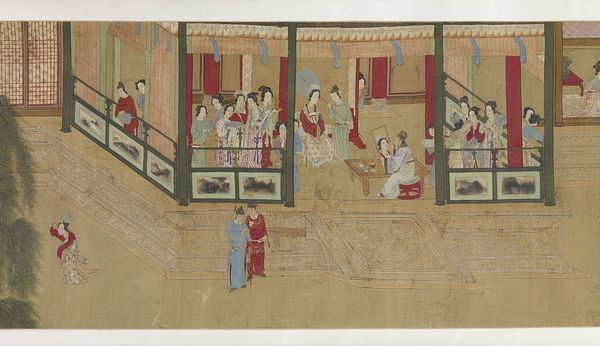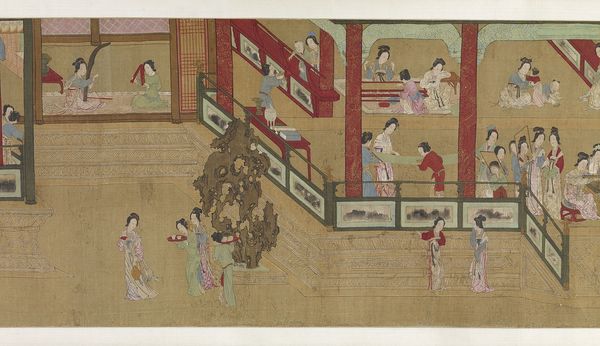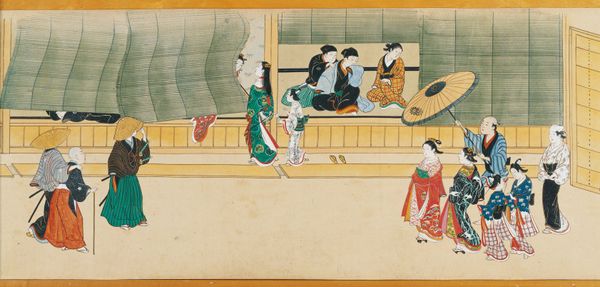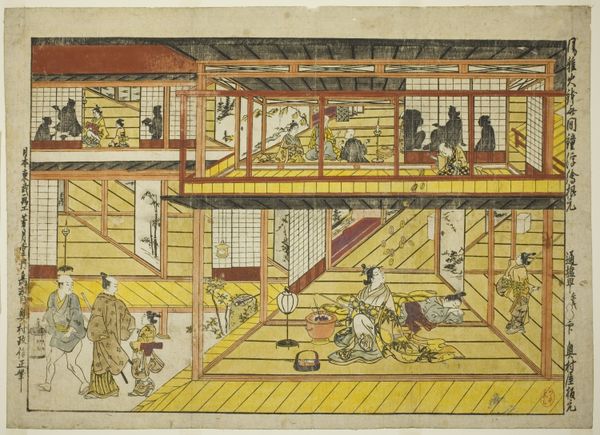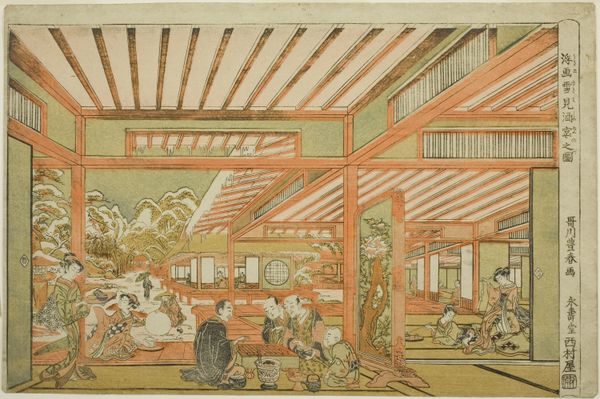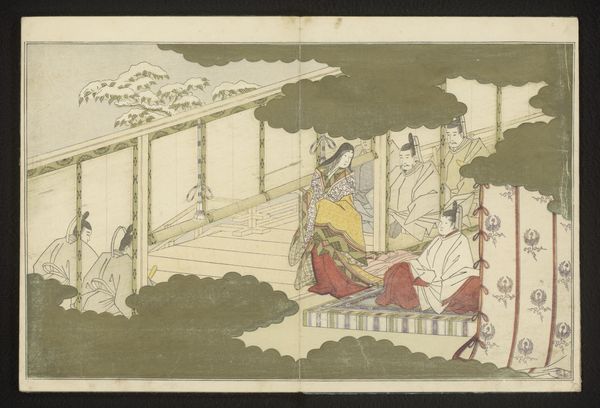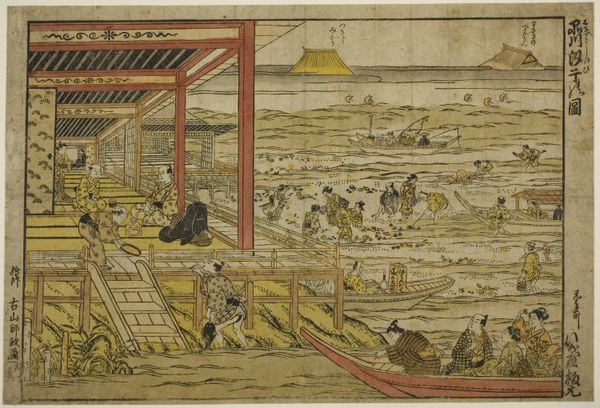
A House of Courtesans, from the series "The Appearance of Yoshiwara (Yoshiwara no tei)" c. 1681 - 1684
0:00
0:00
#
portrait
# print
#
asian-art
#
ukiyo-e
#
figuration
#
genre-painting
Dimensions: 31.6 × 46.7 cm
Copyright: Public Domain
Curator: Looking at Hishikawa Moronobu’s “A House of Courtesans,” created sometime between 1681 and 1684, I am immediately drawn to the implied sounds within the image. Editor: Sounds? It's silent as paper to me. But there's a certain… contained elegance here, like a meticulously arranged dollhouse, suspended just above reach. A very ordered fantasy of the floating world of Yoshiwara in that period. Curator: Exactly! Ukiyo-e prints captured this transient world—licensed pleasure quarters that were visually, architecturally and socially set apart. See how the artist contrasts the almost severe grid of the building structure with the winding, more organic pathway? It’s like life attempting to creep in at the margins. Editor: The figures almost seem caught mid-motion—there's a stillness in the air of people caught at private interactions. Are we witnessing an advertisement? A depiction of daily routines? Is this image an endorsement, a celebration, or a commentary on that isolated system and its social dynamics? Curator: Well, the print definitely reflects the institutional role of courtesans in Edo society. They were expected to provide more than just companionship. They needed to be accomplished in arts, witty conversationalists, symbols of culture. That stage-like structure showcases these highly controlled personas. Editor: Which means that beneath that stage, a whole network of laborers is required to ensure that spectacle runs according to script. Note the roof visible below the floating structure: The life underneath makes the elite one possible. This makes the image more interesting that what is on display above ground. Curator: Precisely, and the very medium is involved in shaping it all, as woodblock printing allows the circulation of ideals. "Here", Moronobu's artwork is perhaps suggesting, "is how things ought to be," both in its setting and in its distribution to the upper social circles. Editor: So, through its artistry, “A House of Courtesans” shows not only how illusions were crafted, but how vital the marketplace was for sustaining them. Thank you for taking us on that insightful voyage, making that history come alive again, reminding us that pleasure is as historically rich and resonant as any battlefield! Curator: And thank you, for prompting a fresh look and opening up other stories nested within those neat lines! It's the exchange, I think, where art history truly thrives.
Comments
No comments
Be the first to comment and join the conversation on the ultimate creative platform.
